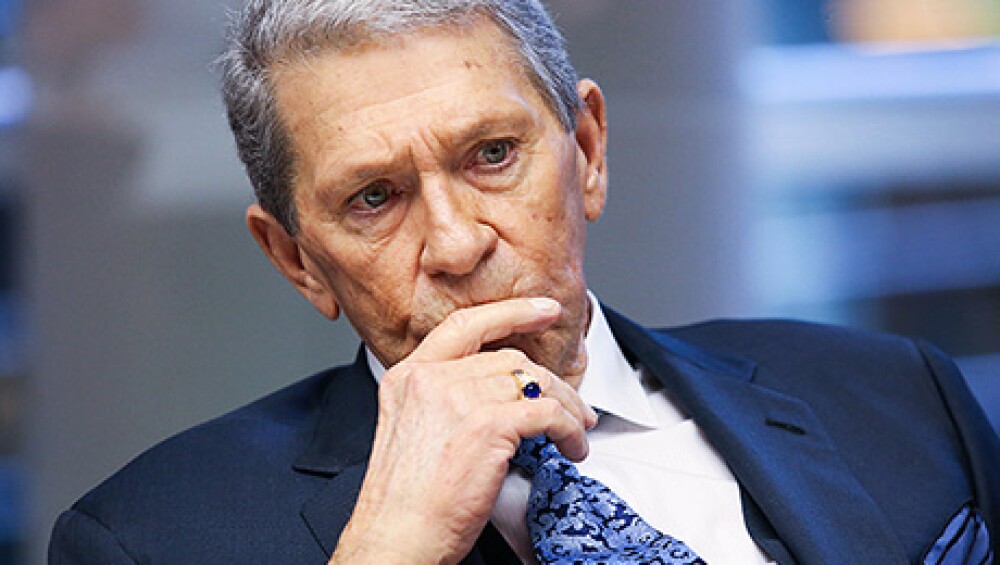Paul Hilal’s new Mantle Ridge activist fund, a special-purpose vehicle launched last summer after he left Bill Ackman’s Pershing Square Capital Management, has almost hit the $2 billion mark, after raising some $1.2 billion last fall and winter.
Since then Mantle Ridge has made about $700 million in performance gains from its single investment in CSX Corp., the U.S. railroad, after convincing the company to hire Hunter Harrison as CEO earlier this year, says Kenneth Squire, the head of 13D Monitor, which tracks activist investors. There’s just one catch: Hilal has to hold onto those gains for years to get paid, and right now that is looking like a tall order.
A spokesman for Mantle Ridge declined to comment.
Mantle Ridge was designed to invest solely in CSX, hoping to repeat Pershing Square’s coup at Canadian Pacific Railway, where the hedge fund won a proxy battle and installed Harrison to great success. Both Ackman and Hilal, who have been close friends since their college days at Harvard, served on the board of Canadian Pacific. As Harrison revamped the railroad, following a similar effort at Canadian National Railway, the stock soared 150 percent, and Pershing Square made $2.5 billion over five years.
[II Deep Dive: What Makes a Firm a Target for Activists?]
While Harrison was CEO at Canadian Pacific, the railroad tried to merge with CSX to expand into the U.S. but was spurned. It then abandoned a bid to merge with another U.S. railroad, Norfolk Southern Corp., after which Hilal resigned from Pershing Square. Within months he was readying Mantle Ridge, with plans to take on CSX via a proxy battle, if necessary, to install Harrison, who agreed to leave Canadian Pacific to do so.
Mantle Ridge began amassing a 4.9 percent stake in CSX late last year, and early this year Hilal began pressing the railroad to hire Harrison. To avoid a proxy battle, the company agreed in March, signing Harrison to a four-year contract. But to convince Harrison to leave Canadian Pacific, Mantle Ridge had to buy out Harrison’s remaining contract, which amounted to $84 million, so it asked CSX shareholders to pay Mantle Ridge back to avoid a departure by Harrison.
Although it was a controversial decision, shareholders agreed to pay the $84 million, leading CSX stock to peak around $55 that month, up from $35.89 on January 3. It has since slid to $48.74 — still up 36 percent for the year.
Monetizing Hilal’s gains at Mantle Ridge could be harder than the success at Pershing Square, however. For one thing, the fund is set up as a special-purpose vehicle with private-equity-like terms. Mantle Ridge’s investors all have different terms, but typically SPVs charge between 10 and 30 percent above a hurdle. Mantle Ridge’s investors have a five–year lockup, and Hilal won’t get paid until that time, at which time his fund will sell its CSX stake.
Meanwhile, Harrison’s efforts to shake up the railroad in the same way he did elsewhere have not gone smoothly. According to a Wall Street Journal report this week, “Congestion, delays, and erratic service are hitting CSX.”
Even Harrison has admitted that his attempt to streamline CSX hasn’t been easy, and some employees are resisting his efforts to, among other things, get rid of naps that workers at U.S. railroads are allowed to take during downtimes. The railroad’s regulator, the U.S. Surface Transportation Board — which was asked by the Justice Department to oppose the merger of Canadian Pacific with Norfolk Southern — told Harrison it is concerned about “widespread degradation” of the service.
A spokesman said in a statement to Institutional Investor that CSX is “transitioning to a new operating model,” which it acknowledges has created “unintended effects” for its customers. “CSX has acknowledged these issues, and we are committed to working through and resolving them as quickly as possible,” the spokesman added.
Sources also say it’s unclear whether the 72-year-old Harrison, who is often working remotely from his home in Florida, can perform the same magic he pulled off at Canadian Pacific and elsewhere. A health scare unnerved investors in Canadian Pacific two years ago, and Harrison was seen tethered to an oxygen machine at the annual CSX shareholder meeting in June. At the meeting, Harrison assured investors that his doctor had cleared him to work and that the board of directors was “fully apprised” of his condition, but he did not disclose what it was.
“Since becoming CEO, Mr. Harrison has been and continues to be actively and deeply involved on a daily basis overseeing all aspects of the management and operation of CSX, and providing leadership and direction across the organization,” the CSX spokesman said in the statement.







